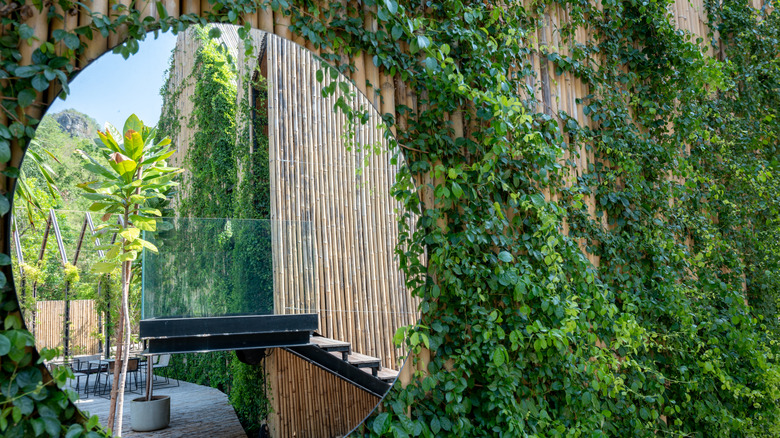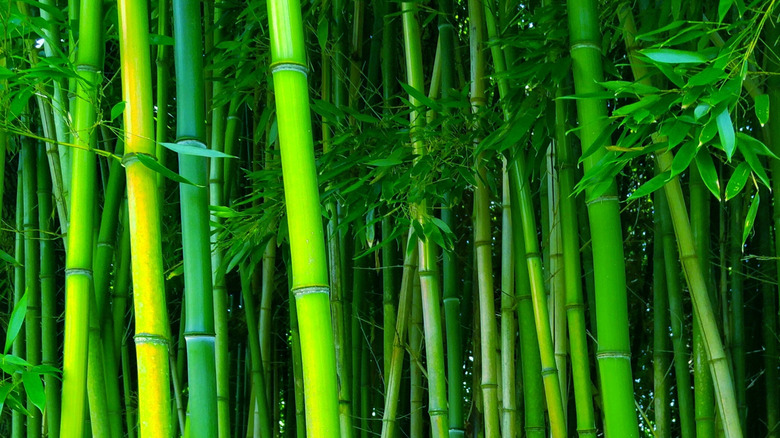The One Type Of Bamboo You Should Never Plant For Privacy
Living fences can be a great way to give your backyard privacy without the hassle of building an actual fence, and bamboo can be one of the best living fence options around, thanks to its fast-growing nature. But before you run out and start planting bamboo, it's essential to do your research. While many species of bamboo can be great options for quickly growing a lush green privacy barrier or hiding a next-door neighbor's unattractive fence, others are extremely invasive in North America and should be avoided. These invasive bamboos are broadly referred to as "running bamboos" thanks to their ability to spread quickly.
Bamboo, which is technically a type of grass, is a large subfamily with different species native to many different parts of the world. There are even a few species of bamboo native to the United States. If you're looking to add bamboo to your landscape or fence line, be sure it is a "clumping bamboo," which is not prone to spreading aggressively, instead of a running bamboo.
While "running bamboo" is a broad term, it refers to bamboos with fast-spreading rhizomes. Many of these bamboos are in the genera Phyllostachys, Pleioblastus, Pseudosasa, or Bambusa. Growing these invasive species as a living fence isn't just a bad idea, it may even be illegal. Some states have passed regulations limiting where running bamboo can legally be planted and how far away from neighboring properties it must be.
Finding the right bamboo for your living privacy fence
Clumping bamboo, so called because of its tendency to grow in clumps instead of spreading aggressively, is often an ideal living fence option. While many types of clumping bamboo don't have very good cold hardiness, others, like 'Green Panda' bamboo (Fargesia rufa), are hardy down to USDA zone 5. 'Green Panda' bamboo can be an ideal living privacy fence option for areas with full or part sun and moist, well-draining soil.
Another good clumping bamboo to consider is 'Alphonse Karr' bamboo (Bambusa multiplex). While considered a dwarf bamboo variety, 'Alphonse Karr' bamboo can still grow to 25 feet in height, making it a great way to add privacy to your yard. As it is hardy in zones 6 through 9, it's a good option for large parts of the United States. As long as you have the right climate for the species you're growing, it's not generally difficult to grow and take care of bamboo plants.
Even clumping bamboo, while not prone to spreading the way running bamboo does, can be difficult to get rid of if you no longer want bamboo in your garden or yard. Generally, the whole clump must be dug up to remove the plant and prevent regrowth, so put careful thought into where and how to use bamboo. Additionally, all types of non-native bamboo, including clumping varieties, should be grown at least 20 feet from natural areas and forests.

